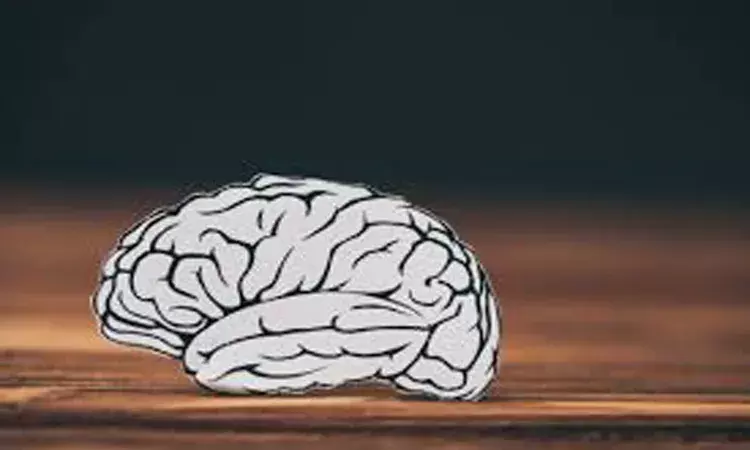- Home
- Medical news & Guidelines
- Anesthesiology
- Cardiology and CTVS
- Critical Care
- Dentistry
- Dermatology
- Diabetes and Endocrinology
- ENT
- Gastroenterology
- Medicine
- Nephrology
- Neurology
- Obstretics-Gynaecology
- Oncology
- Ophthalmology
- Orthopaedics
- Pediatrics-Neonatology
- Psychiatry
- Pulmonology
- Radiology
- Surgery
- Urology
- Laboratory Medicine
- Diet
- Nursing
- Paramedical
- Physiotherapy
- Health news
- Fact Check
- Bone Health Fact Check
- Brain Health Fact Check
- Cancer Related Fact Check
- Child Care Fact Check
- Dental and oral health fact check
- Diabetes and metabolic health fact check
- Diet and Nutrition Fact Check
- Eye and ENT Care Fact Check
- Fitness fact check
- Gut health fact check
- Heart health fact check
- Kidney health fact check
- Medical education fact check
- Men's health fact check
- Respiratory fact check
- Skin and hair care fact check
- Vaccine and Immunization fact check
- Women's health fact check
- AYUSH
- State News
- Andaman and Nicobar Islands
- Andhra Pradesh
- Arunachal Pradesh
- Assam
- Bihar
- Chandigarh
- Chattisgarh
- Dadra and Nagar Haveli
- Daman and Diu
- Delhi
- Goa
- Gujarat
- Haryana
- Himachal Pradesh
- Jammu & Kashmir
- Jharkhand
- Karnataka
- Kerala
- Ladakh
- Lakshadweep
- Madhya Pradesh
- Maharashtra
- Manipur
- Meghalaya
- Mizoram
- Nagaland
- Odisha
- Puducherry
- Punjab
- Rajasthan
- Sikkim
- Tamil Nadu
- Telangana
- Tripura
- Uttar Pradesh
- Uttrakhand
- West Bengal
- Medical Education
- Industry
Increased blood flow during sleep tied to critical brain function

UNIVERSITY PARK, Pa. - Our brains experience significant changes in blood flow and neural activity during sleep, according to Penn State researchers. Such changes may help to clean out metabolic brain waste that builds up during the day.
"We studied the sleep patterns of mice during both rapid eye movement and non-rapid eye movement sleep stages, as well as in different alertness states," said Patrick Drew, Huck Distinguished Associate Professor of Engineering Science and Mechanics, Neurosurgery and Biomedical Engineering.
Mice were chosen for the study because of their brains' remarkable similarity with human brains, said the researchers.
In both mice and humans, non-REM sleep is the first stage of sleep that occurs when a person falls to sleep for about the first hour or two, according to Drew, while REM sleep is characterized by rapid eye movements and vivid dreams.
During the different sleep and alertness states, the researchers monitored the neural activity, blood vessel dilation, electromyography activity and whisker and body movements of the mice.
Mice move their whiskers during rapid eye movement (REM) sleep instead of moving their eyes, and also sleep with their eyelids open.
"The mice naturally fall asleep very quickly even while their heads were restrained to allow for neural imaging," Drew said. "We used machine learning algorithms to continually monitor the sleep stages the animals were in, and also when they were awake, as they greatly impact blood flow fluctuations."
Using optical imaging and two-photon microscopy, report in eLIfe that the researchers found that brain arterioles, or small branches of arteries, were more much more dilated when the mice were in non-REM sleep than when they were awake. During REM sleep, the dilation was even larger than during non-REM sleep.
Such blood flow changes indicate the brain is healthy, according to Drew.
"The dilated blood vessels and increased blood flow may help the brain move waste products out of the brain," he said.
This is why disrupted sleep is associated with diseases that afflict the brain, such as Alzheimer's and dementia.
"The working hypothesis is that with diseases affecting the brain, the body fails to clear the neural waste fluid due to lack of sleep," Drew said. "And decreases in cerebral blood flow often proceed degenerative brain illnesses."
Further, insomnia could negatively contribute to mental health conditions like anxiety and depression, as the brain is unable to clear out the waste fluid when sleep is disrupted for an extended period of time.
"The knowledge of brain processes gained through this study is basic, but it could be applied to a number of clinical studies in the future," Drew said.
In addition to Drew, Penn State researchers include Elizabeth Proctor, assistant professor of neurosurgery, pharmacology, biomedical engineering and engineering science and mechanics; Kevin Turner, doctoral candidate in bioengineering; and Kyle Gheres, doctoral candidate in molecular, cellular and integrative biosciences.
The National Institutes of Health supported this study.
Hina Zahid Joined Medical Dialogue in 2017 with a passion to work as a Reporter. She coordinates with various national and international journals and association and covers all the stories related to Medical guidelines, Medical Journals, rare medical surgeries as well as all the updates in the medical field. Email: editorial@medicaldialogues.in. Contact no. 011-43720751
Dr Kamal Kant Kohli-MBBS, DTCD- a chest specialist with more than 30 years of practice and a flair for writing clinical articles, Dr Kamal Kant Kohli joined Medical Dialogues as a Chief Editor of Medical News. Besides writing articles, as an editor, he proofreads and verifies all the medical content published on Medical Dialogues including those coming from journals, studies,medical conferences,guidelines etc. Email: drkohli@medicaldialogues.in. Contact no. 011-43720751


